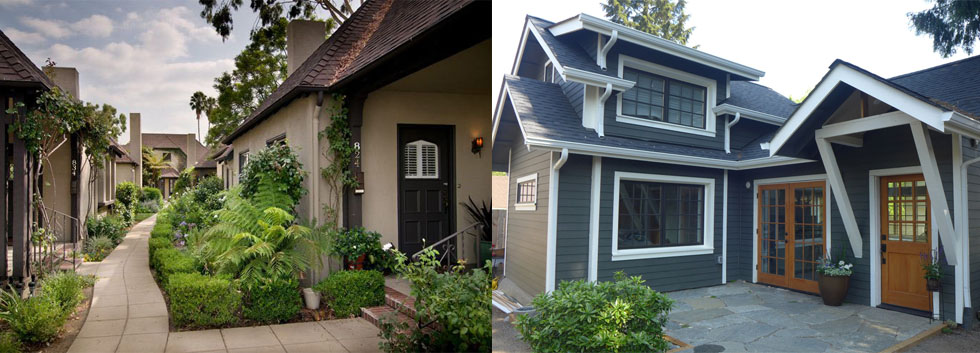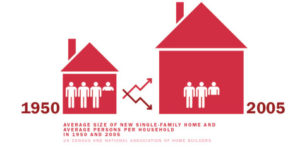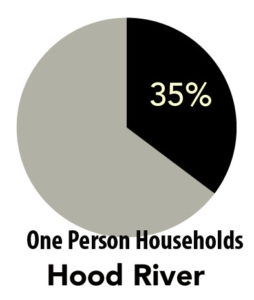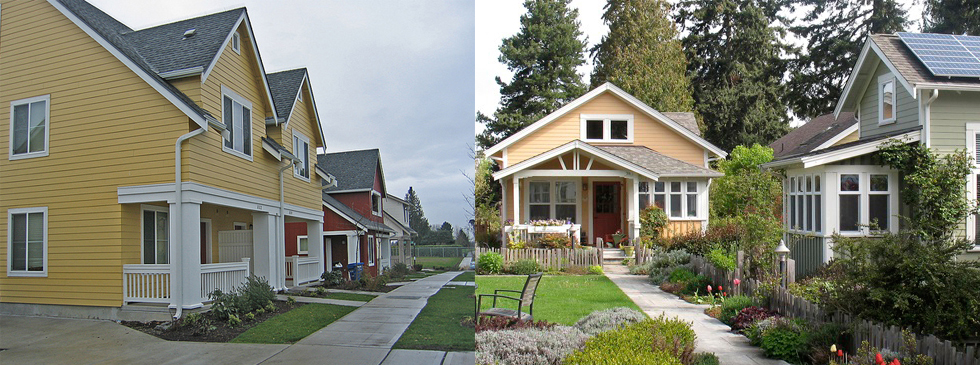
Hood River’s Missing Middle Housing
In 2015, the City of Hood River did a deep data dive on housing. They inventoried the land they had available for new housing and the land that had already been built on. They looked at Hood River’s current population and how it’s expected to grow and change. They analyzed the kinds of homes we have now, the kinds and prices of homes we’ll need in the next 20 years and looked at barriers to producing those homes. Nine months of research resulted in an important report with a wonky name—Hood River’s Housing Needs Analysis and Buildable Lands Inventory (aka “the HNA”). The HNA provides a road map for residential lands for the next 20 years. It verified that the City has enough land—just—to meet its needs for 20 years without expanding the Urban Growth Boundary but also said that land needs to be developed more efficiently at higher density and that the City needed to make moves to bend the curve on housing affordability.

Everyone knows that housing prices in Hood River are high. In fact, Hood River is in the least affordable 1% of rural counties in the U.S. But the reasons behind the high prices aren’t always apparent. We’ve got high land costs but we compound the problem by building much bigger homes than in years past. “Affordable” and “3,000 square foot new home” aren’t concepts that go together. Hood River’s HNA showed a mismatch between current housing production and the types of housing needed by our population. Hood River over-produces large, expensive homes and under-delivers smaller, more moderately priced units. One out of three people in Hood River live in one-person households and we have a shortage of attainable housing both for young people starting out in life and for baby boomers who want to downsize. These folks aren’t looking for a McMansion, they’re looking for a 800-1,200 square foot home in a walkable neighborhood near schools, parks, and shops.

Across the nation there is a trend toward economic segregation. One of the strengths of Hood River has been its tradition of economically diverse neighborhoods. Hood River isn’t Aspen and we don’t want it to be. Will our neighborhoods have places for teachers to live in? For first-time homebuyers? For people moving out of their parent’s home? For new families? Homes where older people can downsize but stay in our community? If we want the answer to these questions to be yes, we’ve got a choice to make.
The choice comes down to density— letting that expensive piece of land accommodate more residents. In local politics, density is often called the “D word” because it can be controversial. But density done well enhances neighborhoods rather than degrades them and it is critically important if we want to address affordability and avoid sprawl. A great model for density done well is “Missing Middle Housing”. Missing Middle Housing is not a new type of building. It is a range of building types that exist in cities and towns across the country that were fundamental building blocks in pre-1940s neighborhoods—you may even have them in your own neighborhood.
Missing Middle is neighborhood living not city living. Due to the small footprint of the buildings and the fact that there are usually a variety of building types even on an individual block, the perceived density of the Missing Middle types is usually quite low—they do not look like dense buildings.
Unfortunately, Hood River’s zoning code has barriers that make these forms difficult. Accessory Dwelling Units—an apartment over the garage or a basement flat in a single family home— are one of our favorite ways to achieve invisible density but our zoning code imposes so many barriers that only about 2 units per year have been permitted in the 10 years ADUs have been allowed here. The City of Hood River is currently working to rewrite its residential zoning code to remove barriers and provide incentives to deliver the types and sizes of housing our community needs most.
What’s Missing Middle?
Missing Middle Housing is the name given to a range of multi-unit or clustered housing types compatible in scale with single-family homes. They provide diverse housing options along the spectrum of affordability, and include things like duplexes, fourplexes, granny flats, cottage clusters and bungalow courts. When well-designed they fit right into neighborhoods of single-family homes and provide invisible density. They allow us to use land more efficiently while retaining neighborhood character. The forms will feel familiar, most older American cities are loaded with these aesthetically- pleasing, small unit buildings. Find out more www.missingmiddle.com.

